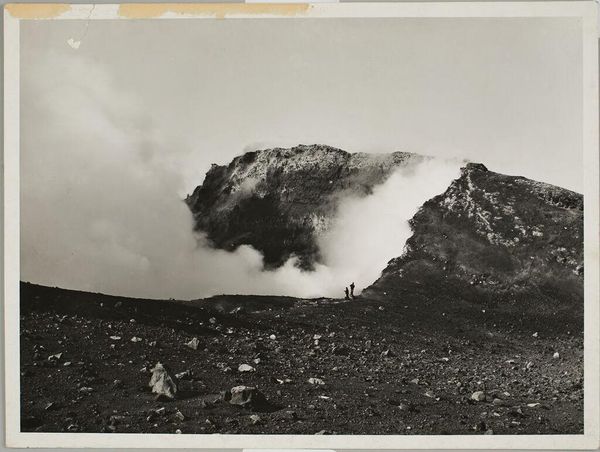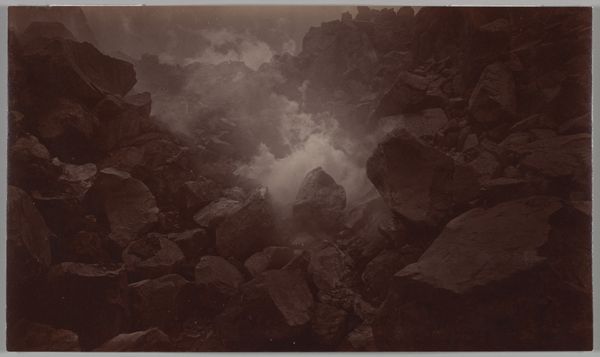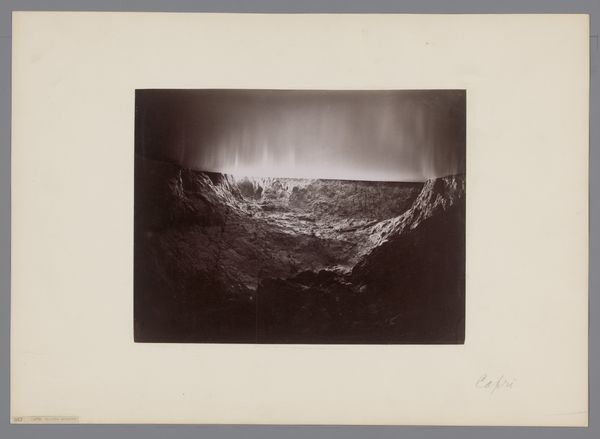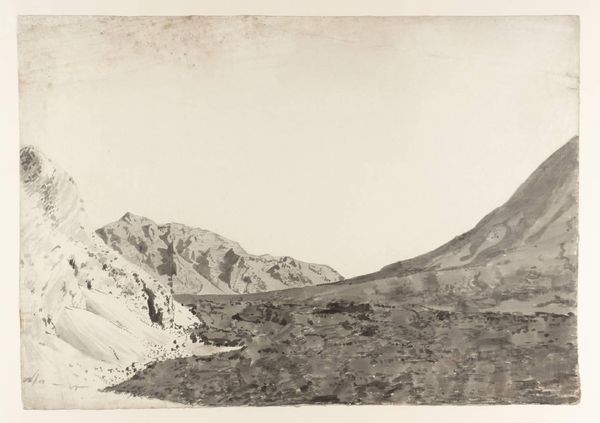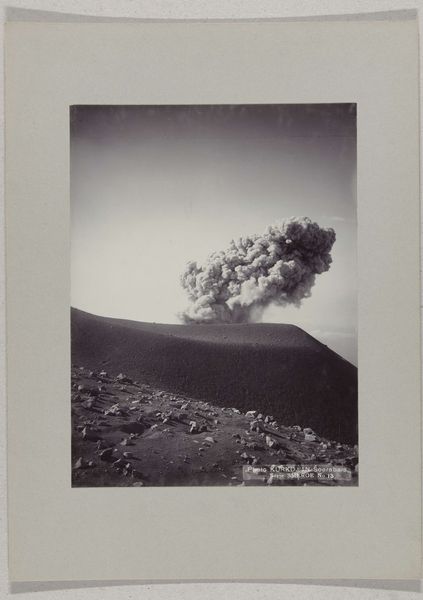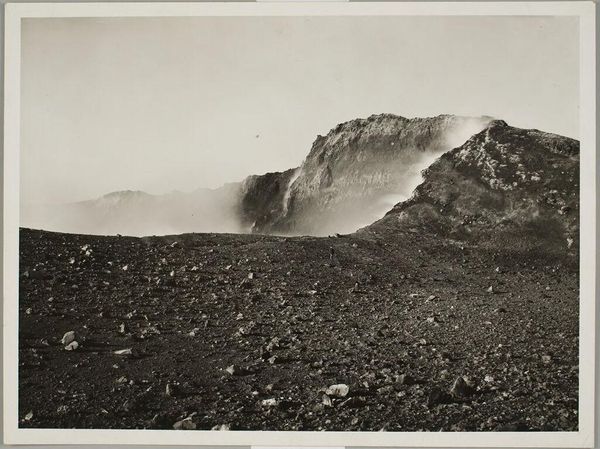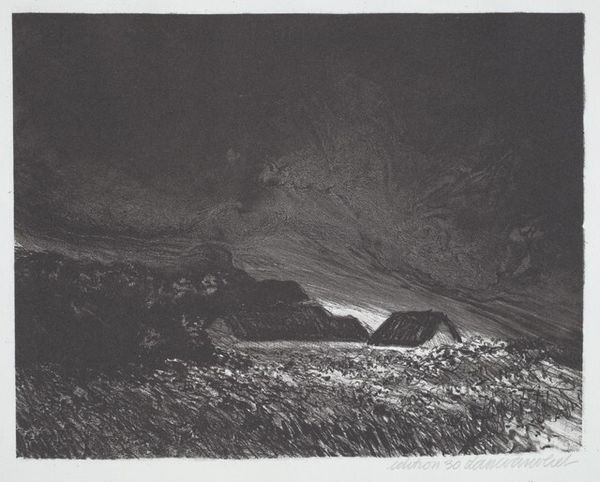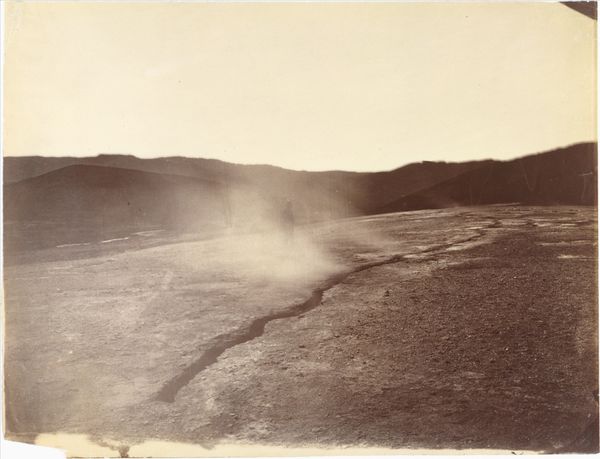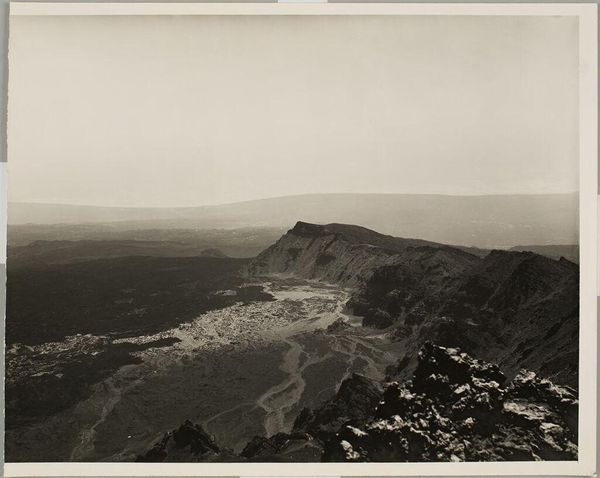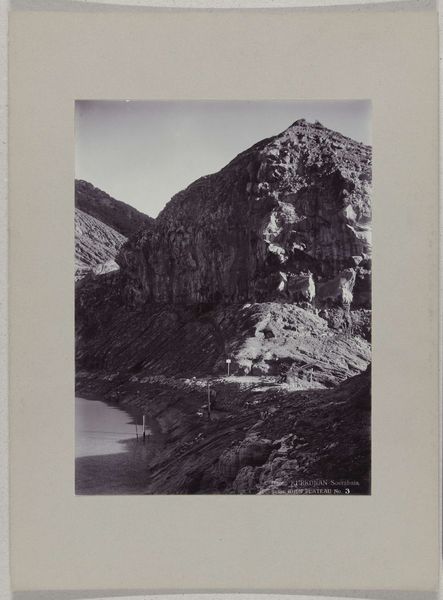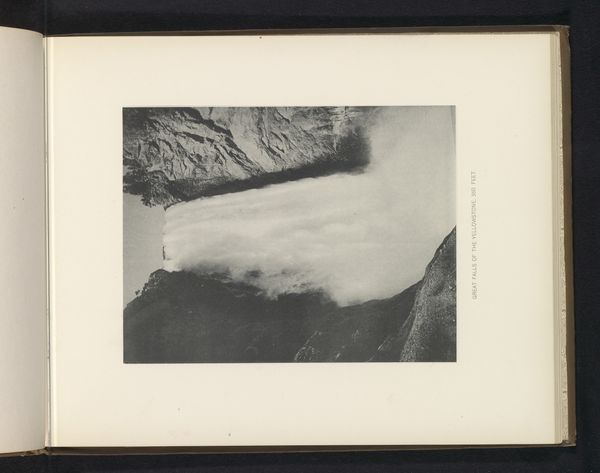
photography, gelatin-silver-print
#
landscape
#
photography
#
orientalism
#
gelatin-silver-print
#
realism
Dimensions: height 167 mm, width 224 mm, height 243 mm, width 329 mm
Copyright: Rijks Museum: Open Domain
Editor: This is "Kawah Mas van de Papandajan bij Garoet, Nederlands-Indië", a gelatin-silver print taken between 1895 and 1915 by Onnes Kurkdjian. It depicts a volcanic landscape, and I'm struck by the strong contrast between the dark, solid earth and the ephemeral, rising steam. What stands out to you? Curator: Immediately, I observe the meticulous tonal arrangement, pivoting from the foreground’s granular textures to the atmospheric gradations of the vaporous plumes. Note the calculated placement of the volcanic vents—strategically positioned to lead the eye across the barren expanse, achieving an almost sublime visual rhythm. Editor: Sublime in what way? The desolate landscape seems almost bleak. Curator: Consider how the photograph transforms raw, geological activity into a structured visual experience. The light, though diffuse, sculpts the contours of the volcanic basin. Ask yourself, what semiotic readings can you find in this stark contrast of substance and ephemerality, of earth and air? It invites a meditation on the very nature of photographic representation. Editor: So, it’s less about the volcano itself and more about how Kurkdjian chose to frame it? Curator: Precisely. The image isn’t simply a document; it’s a carefully constructed interplay of form, light, and texture, urging us to analyze its inherent qualities, how those build towards a representation. What did you find interesting from this approach? Editor: That an image could reveal its qualities independent of the actual thing that it pictures. Curator: Yes! The photographic image is a rich sign, always inviting inquiry into its making, into its aesthetic arrangement.
Comments
No comments
Be the first to comment and join the conversation on the ultimate creative platform.
